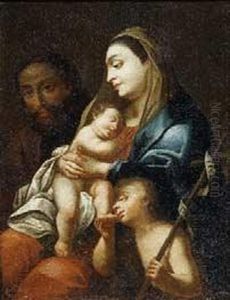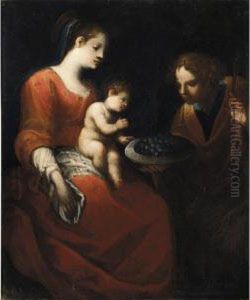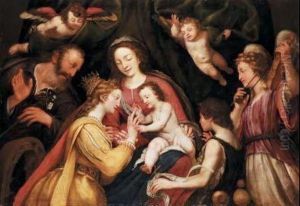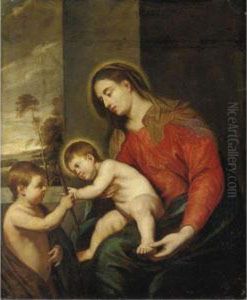Pellegrino Piola Paintings
Pellegrino Piola was an Italian painter born in 1617 in Genoa, Italy, during the late Renaissance period, which transitioned into the Baroque era. He was part of a family of artists; his father, Domenico Piola, was a prominent painter and engraver, and his brother, Paolo Piola, was also involved in the arts. The Piola family workshop was influential in Genoa, contributing to the city's artistic developments during the 17th century.
Pellegrino began his artistic training under the guidance of his father, where he was exposed to a mix of Mannerist and early Baroque styles. His early works showed a remarkable understanding of light, color, and composition, influenced by the Genoese school and the dramatic chiaroscuro technique of Caravaggio. Unfortunately, Pellegrino's career was cut short; he died at the young age of 23 in 1640, which limited his output and the potential impact he might have had on the art world.
Despite his brief career, Pellegrino Piola's work was noted for its grace and the delicate sensibility he brought to religious themes. He also worked on frescoes and altarpieces, contributing to the decoration of several churches in Genoa. His style was characterized by a certain sweetness and tender expression, which was later developed further by his father and other members of the Piola workshop.
Pellegrino's early death meant that much of his promise went unfulfilled, but his existing works still provide a glimpse into the talents of a young artist who could have become a significant figure in the Genoese art scene. His contributions, though limited, are still recognized as part of the rich tapestry of Italian Baroque painting. Today, Pellegrino Piola's works can be found in various art collections and are studied for their embodiment of the transition from Renaissance to Baroque art in Genoa.



